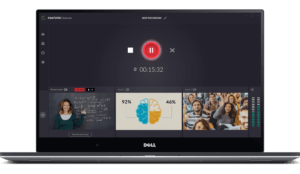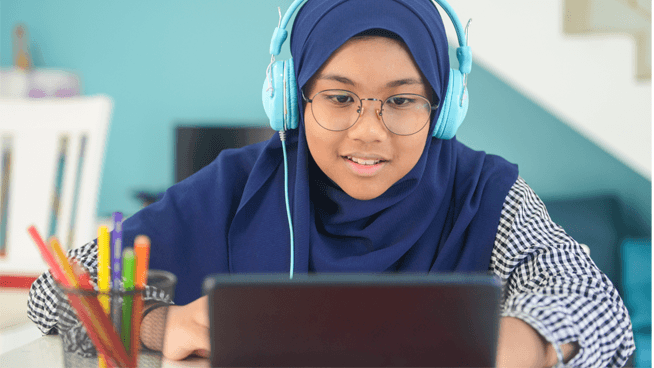Learning can – and should – be an anytime, anywhere experience. This is certainly true when it comes to informal education such as the books we choose to read and websites we choose to visit to pursue knowledge on our own, independent of educational institutions.
But formal education at the university level has often been tied to time and place. While this has built community and fosters the exchange of ideas, it has risked leaving some people out. Tools for virtual learning like lecture capture and online classroom experiences are changing this, by adding flexibility and accessibility to traditional educational experiences.
We know lectures can be recorded and viewed by students at a later date. But what if lectures could be recorded and broadcast as they happened, bringing virtual and in-person learners a shared experience that helps keep both groups on the same educational path?
The Value of Live Broadcasting in Kaltura Lecture Capture
Kaltura Lecture Capture is about recording courses, which are automatically uploaded to the LMS, for later viewing by students. But that experience has meant that remote learners have to wait to view the class, which risks them falling behind or being excluded from discussions with their peers. But if we could stream a class at the same time it was being captured for later viewing, remote learners would be able to experience a class while it was being recorded. This would expand the options available to all students, allowing live remote viewing, recorded viewing, and – once we no longer have to be socially distanced – the in-person classroom experience.
That’s the idea behind the addition of live broadcasting capabilities to Kaltura Lecture Capture.
With live broadcasting available in Kaltura Lecture Capture, a single class can now be experienced in multiple different ways, all with little-to-no technical engagement from faculty. This allows instructors to do what they do best – teach! – without having to devote time and energy to figuring out how to be a broadcaster or producer.
The Kaltura Lecture Capture live broadcasting feature can be used to meet existing needs, bring your educational community together, and increase accessibility. For example, this tool can allow your university to share a major guest-lecture across an entire campus, provide overflow rooms for popular events and classes, give remote students a chance to listen in to live classroom instruction, and facilitate hybrid learning in which students have the choice to be in the classroom or watching the classroom from another location.
Deploying Kaltura Lecture Capture with Live Broadcasting
Adding live broadcasting to your Kaltura Lecture Capture deployment is easy. All you have to do is check the Live Broadcast option when scheduling a lecture. From there, everything is taken care of!
When a class starts, the recording and broadcast of the lecture begin automatically. Admins will be able to monitor live broadcasts through the monitoring dashboard. Classes start on time and focus on learning, instead of valuable time being wasted on fumbling with improvised technology solutions.
With background upload capabilities, once the recording is complete, it automatically uploads to Kaltura in the background, even if the original user has logged off.
Perhaps most importantly, Kaltura Lecture Capture integrates with your LMS. This integration provides a way to make sure those choosing to watch live have a way to access the live broadcast remotely and that those choosing to watch later, get access to the recording as soon as possible. Of course, professors can choose not to publish the recording to the course gallery if they are interested in editing the lecture recording before sharing it with students.
What is the Live Broadcast Experience Like for Learners?
For students in the classroom, the use of a lecture capture solution in the room will not affect their class experience. But because other students who are not in the classroom are viewing it at the same time, in-person and live remote learners will now be able to discuss the material together or work on group projects as soon as they get out of class. There’s no need to wait for those distance learners to get caught up.
Of course, the capture element means that all students have the opportunity to rewatch the class for review, while those who couldn’t attend also have an opportunity to see the lesson and remain engaged with the course.
Ultimately, the broadcasting feature in Kaltura Lecture Capture is all about flexibility – for your students and the educational experience they want to have and for your institution and the types of students it wants to recruit and serve.

Want to explore Kaltura Lecture Capture?





